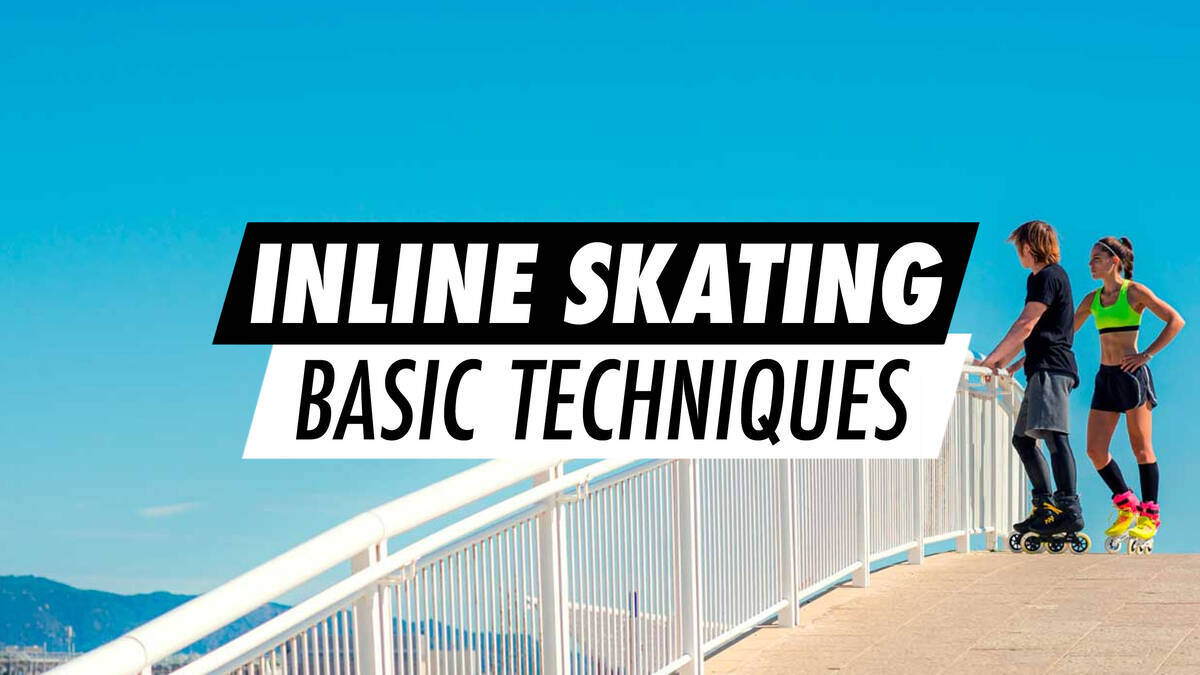Inline Skating - Essential Techniques

Mastering inline skating involves developing a firm stance, safely stopping, executing smooth turns, and learning the art of falling correctly. This guide provides beginners with everything essential about inline skating techniques.
Inline skating suits everyone – regardless of size or age. All you require is a pair of inline skates, some protective equipment, and a smooth area free from traffic, and you're set to begin practicing. Although the initial learning stage can be challenging, noticeable improvement often occurs within a few hours, so perseverance is key!
Overview
Achieving the Right Stance on Inline Skates
For the correct stance on inline skates, ensure your knees are bent. This position lowers your centre of gravity, aiding your ability to balance.
Ensure your feet remain parallel with toes pointing straight forward, avoiding inward or outward angles.
With bent knees, aligned feet, and a slightly forward-leaning upper body, your stance becomes stable and balanced.
Watch our instructional video, How to Skate on Inline Skates:
Methods to Stop on Inline Skates
Braking on inline skates can be done using either the brake pad or the T-stop method.
Utilising the Brake Pad on Inline Skates
To utilise your brake pad, advance the skate with it ahead and raise your toes so that the brake pad contacts the ground, enabling you to decelerate. The brake pad allows you to adjust your speed comfortably or bring yourself to a stop. Beginners should familiarise themselves with the brake pad for maintaining control.
T-Stop Method on Inline Skates
The T-stop method involves positioning one foot behind you, with the wheels dragging perpendicular to your leading foot, forming a T shape. Continue dragging the wheels until you've come to a complete stop. Executing a T-stop requires balancing on one foot while in motion.
The T-stop on inline skates uses your wheels for braking without needing a brake pad. This provides a significant advantage, as brake pads can sometimes become an obstacle. Novices should also consider learning the T-stop method to enhance control over their inline skates.
Both methods are demonstrated in our video tutorial, How to Stop on Inline Skates:
Turning Technique on Inline Skates
When executing a turn on inline skates, maintain a slight forward lean with bent knees. To turn left, gradually move your left foot forward; do the opposite for a right turn. Transfer your weight to the direction of the turn while your upper body leans into it. Looking towards the direction of the turn can also greatly assist.
Focusing on your turning technique can help you avoid beginners’ common pitfalls, laying the groundwork for mastering the cross-over turning technique as you progress.
Techniques for Falling Safely on Inline Skates
Opting to fall forward is ideal as it allows more control and reduces the risk of injuring your head or tailbone.
Should you start losing your balance on inline skates, try the following steps:
- Crouch and lean forward – staying low brings you closer to the ground, lessening the impact if you fall. You might even regain control.
- Rely on your protectors – your knee pads, elbow pads, or wrist pads can absorb the impact. If moving at speed when falling, try sliding on your protective gear to prevent abrasions.
Employing these techniques helps minimise injury risks, allowing uninterrupted progression with your inline skating experiences.
Choosing Ideal Inline Skates for Learning
Both novices and experienced skaters alike should select inline skates that are a snug fit and offer comfort. Beginner inline skates should include a heel brake and provide substantial ankle support. Opt for softer wheels (76A - 84A), keeping the size manageable – for adults with larger feet, 84 mm or less is best, while children's proper sizing would be below 70 mm.
For further insights, review our guides on selecting inline skates:
